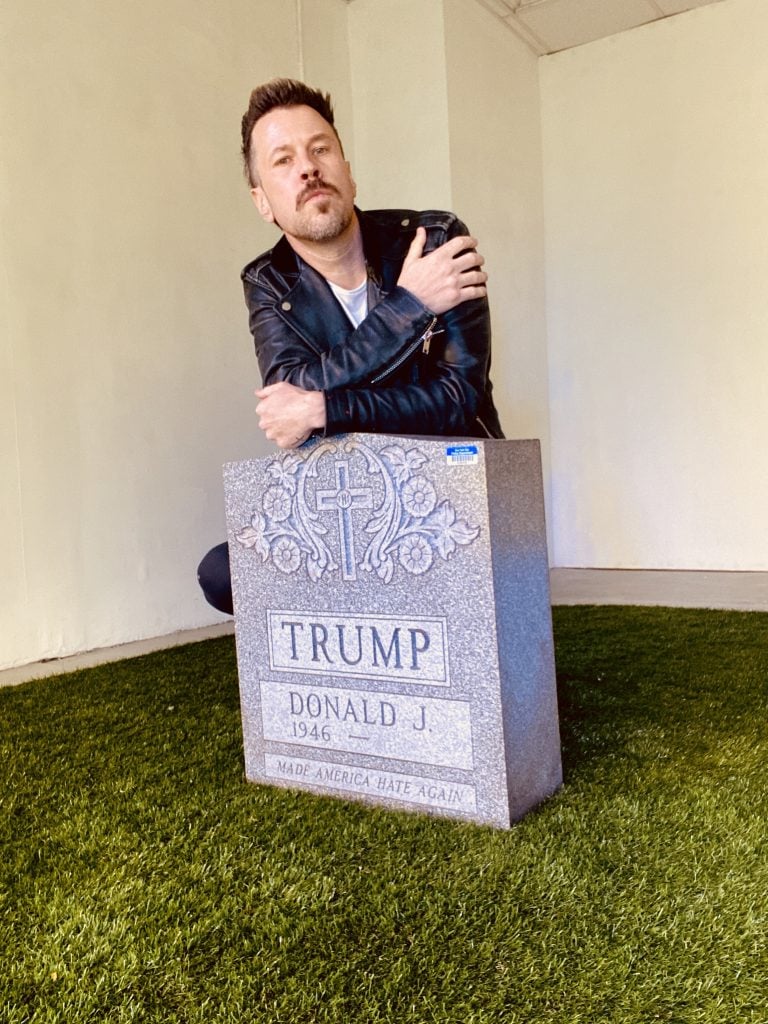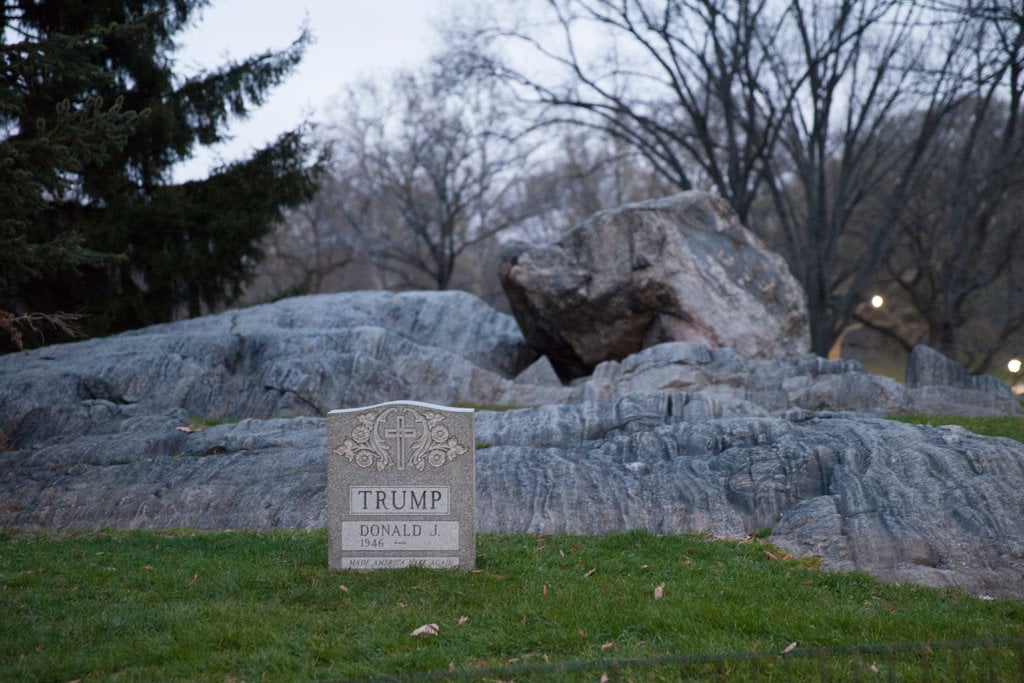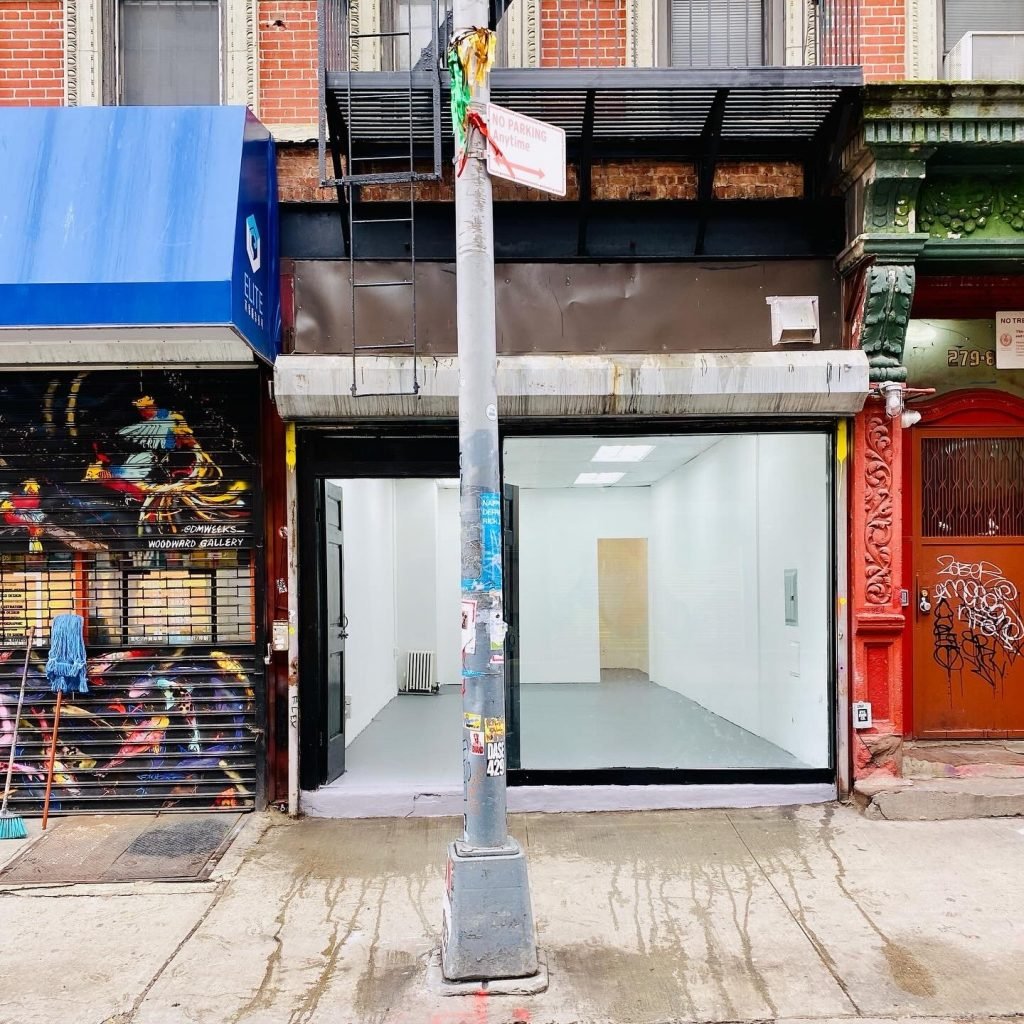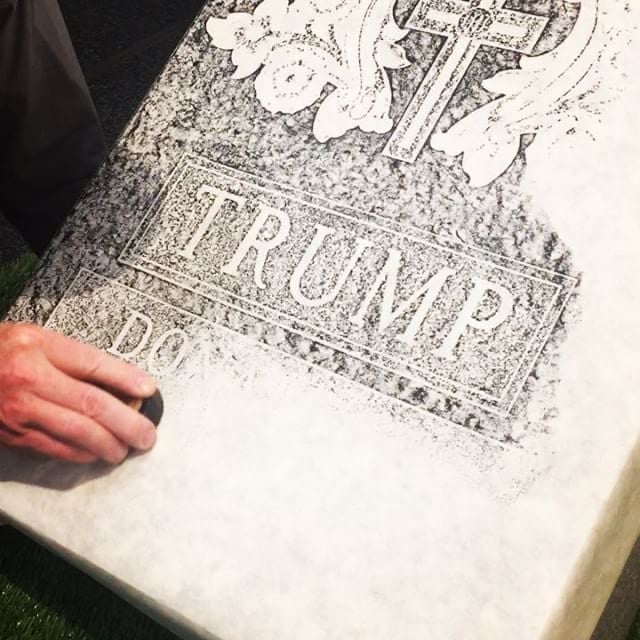Law & Politics
Why This Artist Is Bringing His Divisive Trump Headstone Back
The guerrilla artwork sparked a Secret Service investigation when it first appeared in Central Park in 2016.

The guerrilla artwork sparked a Secret Service investigation when it first appeared in Central Park in 2016.

Sarah Cascone

Twice this election year, current Republican nominee and former President Donald Trump has survived an assassination attempt. Back in 2016, during the ex-reality show host’s first presidential campaign, artist Brian Andrew Whiteley created an artwork seemingly presaging Trump’s death, planting a tombstone for the politician in Central Park.
The nearly 500-pound sculpture triggered a secret service investigation and earned the artist death threats himself. Now, over eight years later, with Trump yet again seeking the country’s highest office, Whiteley is bringing back the infamous artwork, titled Legacy Stone, for an exhibition at New York’s Satellite Art Show.
“I can’t believe it—it’s history repeating itself,” Whiteley said of Trump’s third presidential run, noting that the political atmosphere seems more heated than ever. “I had a lot of people tell me not to show the piece again because of the recent assassination attempt.”
The artist actually ordered the Vermont granite gravestone—engraved with Trump’s birth year, 1946, but no year of death, so that the artwork wouldn’t seem like a death threat—before the future president had secured the 2016 Republican nomination. By the time stone was carved and ready to pick up, Trump was officially set to become his party’s choice.

Brian Andrew Whiteley’s Donald Trump tombstone, Legacy Stone, in Central Park’s Sheep Meadow on Easter Sunday, March 2016. Photo by Ventiko, courtesy of Molly Krause Communications.
Under cover of night, he planted the grave in Central Park’s Sheep Meadow, where the city awoke to it on Easter Sunday. The initially anonymous project quickly went viral—but also attracted the unwelcome attention of law enforcement.
“There was an open investigation with NYPD and the Secret Service, and after a few weeks they tracked me down,” Whiteley said. (An interview with Gothamist led the police to Supreme Memorials in Brooklyn, where the artist purchased the stone and had it carved, and to Whiteley’s door.)
Being interrogated by the Secret Service and having his phone calls monitored was one thing, but it was the death threats he got from Trump supporters that were truly disturbing.
“There was a continued amount of trauma,” Whiteley admitted. “But Trump was just so horrible with the way that he denounces people. From the second he started his campaign saying, ‘Mexicans are rapists’ and stuff like that, it was gut-wrenching. I had to say something, and I had to do something.”

Brian Whiteley, Trumptombstone, a relief print made by taking a rubbing of Legacy Stone. Photo courtesy of Center Street Studio, Boston.
The guerrilla artwork was supposed to be a wake up call for Trump, a kind of Dickensian warning about the direction his life—and campaign—was heading.
“It was intended as a direct message to Donald Trump. If anything that could cut through the noise and news of the day, it would be for him to visualize his legacy, his memorial,” Whiteley said. “This is how you will be remembered, as a divisive, fear-mongering man.”
The artist didn’t originally have longterm plans for the work. After successfully retrieving the artwork from a three-and-a-half-month stint in police evidence, Whiteley held an exhibition of the piece at Brooklyn’s Christopher Stout Gallery ahead of the election. He knew there was a possibility Trump would win, he told ARTnews at the time, but “ideally that doesn’t happen and I can retire this as a one-time political protest piece.”
Instead, Legacy Stone has remained all too relevant, with Trump continuing to rile up hate and discord among his base. (Just to be safe, Whiteley will have full-time security in place for the exhibition.)
The artwork also has become a physical burden. Every time Whiteley moves the sculpture—and it’s traveled as far afield as St. Louis, Boston, Miami, and Baltimore for various fairs and other shows—it requires three or four people, special equipment, and a truck.

The Satellite Art Show gallery on Broome Street on New York’s Lower East Side. Photo courtesy of Satellite Art Show.
Whiteley is open to finding a permanent home for the work, but he believes that the prevalence of conservative donors in the art world may make that a hard sell.
“When I first made it, there were people reaching out, institutions who wanted it—and then he got elected president and it became toxic,” Whiteley said. “I am also looking at the potential purchase of an actual grave site or other parcels of land to place it. It has to be dependent on which cemetery would allow something like that.”
The upcoming exhibition of the work is actually at Whiteley’s own art space on the Lower East Side, which is equal parts gallery and performance venue. (Last weekend, it hosted a queer strip club.) It opened in a former mahjong gambling parlor in April with an ambitious run of daily shows titled “30 Lovers in 30 Days.”
The gallery is an extension of Whiteley’s Satellite Art Show, a scrappy art fair first launched in Miami in 2015 and known as an affordable option for artists. The only art fair with a year-round brick and mortar exhibition space, Satellite will have a new indoor venue on Lincoln Road in Miami Beach this year, and will also return to Austin during SXSW for the second time, and first since 2019.

The making of Brian Whiteley’s Trumptombstone, a relief print made by taking a rubbing of Legacy Stone. Photo courtesy of Center Street Studio, Boston.
The Legacy Stone exhibition will be on view through the end of the month, with a grave rubbing ceremony with master printer James Stroud of Center Street Studio, Boston, all day on October 19. That evening, there will be a talk with the artist, the printer, and my colleague Brian Boucher, who was among the first to name Whiteley as the unsanctioned work’s creator. The resulting prints, on archival Japanese paper, will be for sale for $900 each.
“It’s the oldest form of printmaking,” Whiteley said. ”We get a nice relief print of the actual face of the tombstone.”
“Brian Andrew Whiteley: The Legacy Stone” will be on view at Satellite Art Show, 279 Broome Street, New York, October 10–31, 2024.